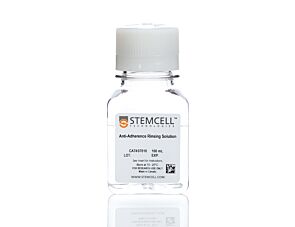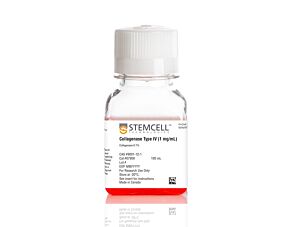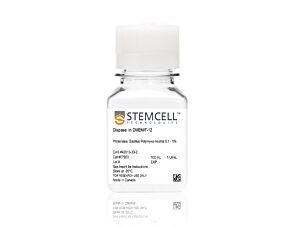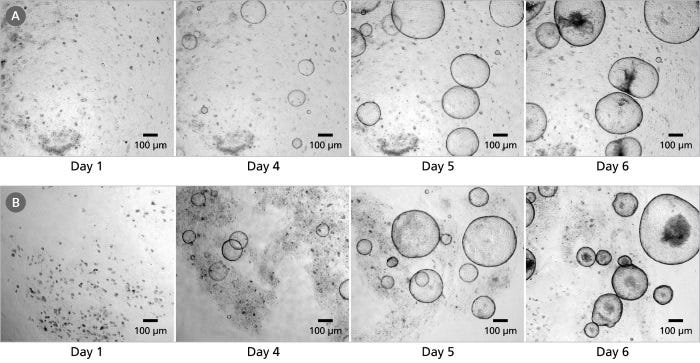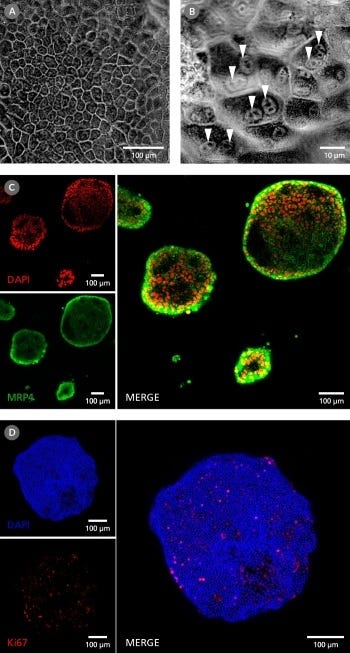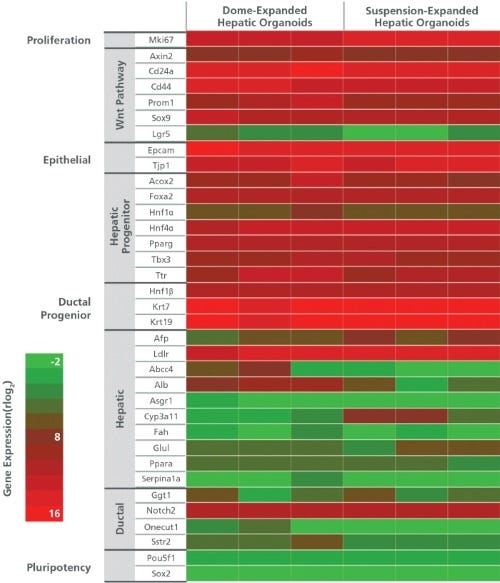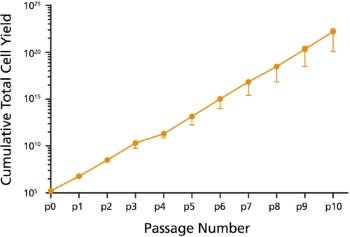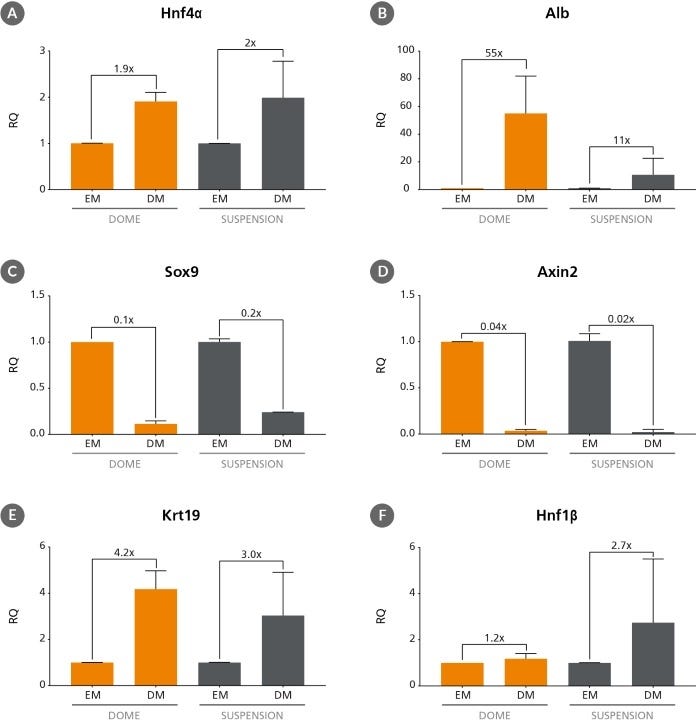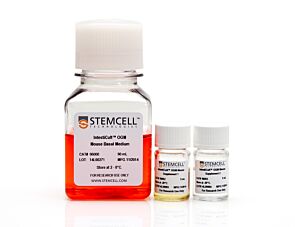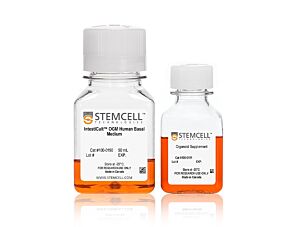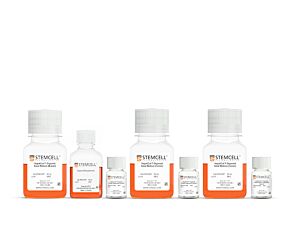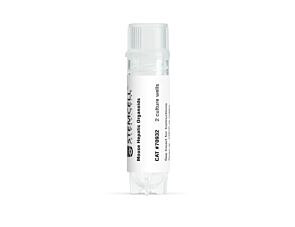HepatiCult™ Organoid Growth Medium (Mouse)
Cell culture medium for establishment and maintenance of mouse hepatic progenitor organoids
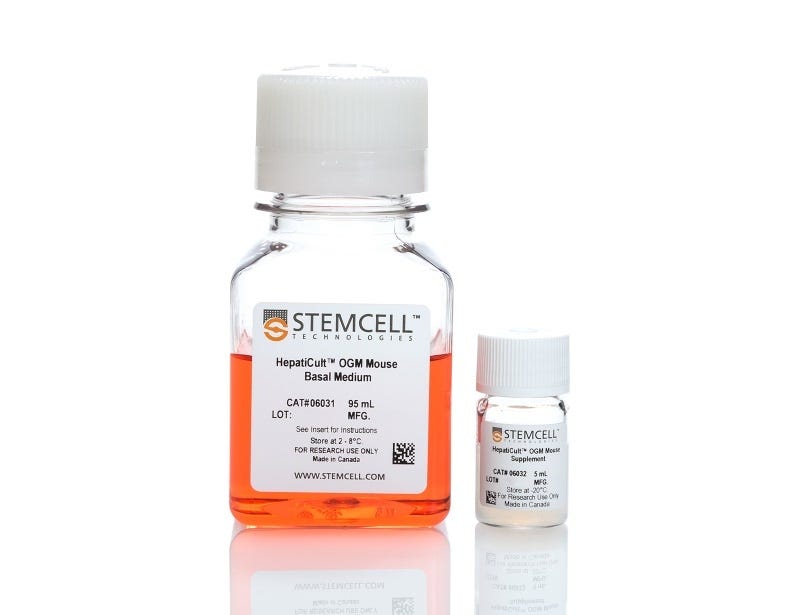
Interested in trying STEMCELL's organoid products for your liver research? Fill out this form to request information about introductory offers.
Overview
Data Figures
Protocols and Documentation
Find supporting information and directions for use in the Product Information Sheet or explore additional protocols below.
Applications
This product is designed for use in the following research area(s) as part of the highlighted workflow stage(s). Explore these workflows to learn more about the other products we offer to support each research area.
Resources and Publications
Educational Materials (20)
Publications (2)
The CellRaft AIR? system: A novel system enabling organoid imaging, identification, and isolation
SLAS Discovery 2022 4
Abstract
Three-dimensional (3D) culture systems have been developed that can re-capitulate organ level responses, simulate compound diffusion through complex structures, and assess cellular heterogeneity of tissues, making them attractive models for advanced in vitro research and discovery. Organoids are a unique subtype of 3D cell culture that are grown from stem cells, are self-organizing, and closely replicate in vivo pathophysiology. Organoids have been used to understand tissue development, model diseases, test drug sensitivity and toxicity, and advance regenerative medicine. However, traditional organoid culture methods are inadequate because they are low throughput and ill-suited for single organoid imaging, phenotypic assessment, and isolation from heterogenous organoid populations. To address these bottlenecks, we have adapted our tissue culture consumable and instrumentation to enable automated imaging, identification, and isolation of individual organoids. Organoids grown on the 3D CytoSort? Array can be reliably tracked, imaged, and phenotypically analyzed using brightfield and fluorescent microscopy as they grow over time, then released and transferred fully intact for use in downstream applications. Using mouse hepatic and pancreatic organoids, we have demonstrated the use of this technology for single-organoid imaging, clonal organoid generation, parent organoid subcloning, and single-organoid RNA extraction for downstream gene expression or transcriptomic analysis. The results validate the ability of the CellRaft AIR? System to facilitate efficient, user-friendly, and automated workflows broadly applicable to organoid research by overcoming several pain points: 1) single organoid time-course imaging and phenotypic assessment, 2) establishment of single cell-derived organoids, and 3) isolation and retrieval of single organoids for downstream applications.
Modulation of the extrinsic cell death signaling pathway by viral Flip induces acute-death mediated liver failure.
Cell death {\&} disease 2019
Abstract
During viral infections viruses express molecules that interfere with the host-cell death machinery and thus inhibit cell death responses. For example the viral FLIP (vFLIP) encoded by Kaposi's sarcoma-associated herpesvirus interacts and inhibits the central cell death effector, Caspase-8. In order to analyze the impact of anti-apoptotic viral proteins, like vFlip, on liver physiology in vivo, mice expressing vFlip constitutively in hepatocytes (vFlipAlbCre+) were generated. Transgenic expression of vFlip caused severe liver tissue injury accompanied by massive hepatocellular necrosis and inflammation that finally culminated in early postnatal death of mice. On a molecular level, hepatocellular death was mediated by RIPK1-MLKL necroptosis driven by an autocrine TNF production. The loss of hepatocytes was accompanied by impaired bile acid production and disruption of the bile duct structure with impact on the liver-gut axis. Notably, embryonic development and tissue homeostasis were unaffected by vFlip expression. In summary our data uncovered that transgenic expression of vFlip can cause severe liver injury in mice, culminating in multiple organ insufficiency and death. These results demonstrate that viral cell death regulatory molecules exhibit different facets of activities beyond the inhibition of cell death that may merit more sophisticated in vitro and in vivo analysis.
Interested in trying STEMCELL's organoid products for your liver research? Fill out this form to request information about introductory offers.
Legal Statement:
This product was developed under a license to intellectual property owned by Hubrecht Organoid Technology (HUB). This product is sold for research use only. Purchase of this product does not include the right to use it for drug screening aiming for commercial gain, equipment validation, biobanking, or for other commercial purposes. Purchasers wishing to use the product for purposes other than basic research use should contact HUB at www.huborganoids.nl to obtain a further license. Purchasers may apply for a License from HUB, which will not be unreasonably withheld by HUB.
This product was developed under a license to intellectual property owned by Hubrecht Organoid Technology (HUB). This product is sold for research use only. Purchase of this product does not include the right to use it for drug screening aiming for commercial gain, equipment validation, biobanking, or for other commercial purposes. Purchasers wishing to use the product for purposes other than basic research use should contact HUB at www.huborganoids.nl to obtain a further license. Purchasers may apply for a License from HUB, which will not be unreasonably withheld by HUB.
Quality Statement:
PRODUCTS ARE FOR RESEARCH USE ONLY AND NOT INTENDED FOR HUMAN OR ANIMAL DIAGNOSTIC OR THERAPEUTIC USES UNLESS OTHERWISE STATED. FOR ADDITIONAL INFORMATION ON QUALITY AT STEMCELL, REFER TO WWW.STEMCELL.COM/COMPLIANCE.
PRODUCTS ARE FOR RESEARCH USE ONLY AND NOT INTENDED FOR HUMAN OR ANIMAL DIAGNOSTIC OR THERAPEUTIC USES UNLESS OTHERWISE STATED. FOR ADDITIONAL INFORMATION ON QUALITY AT STEMCELL, REFER TO WWW.STEMCELL.COM/COMPLIANCE.
